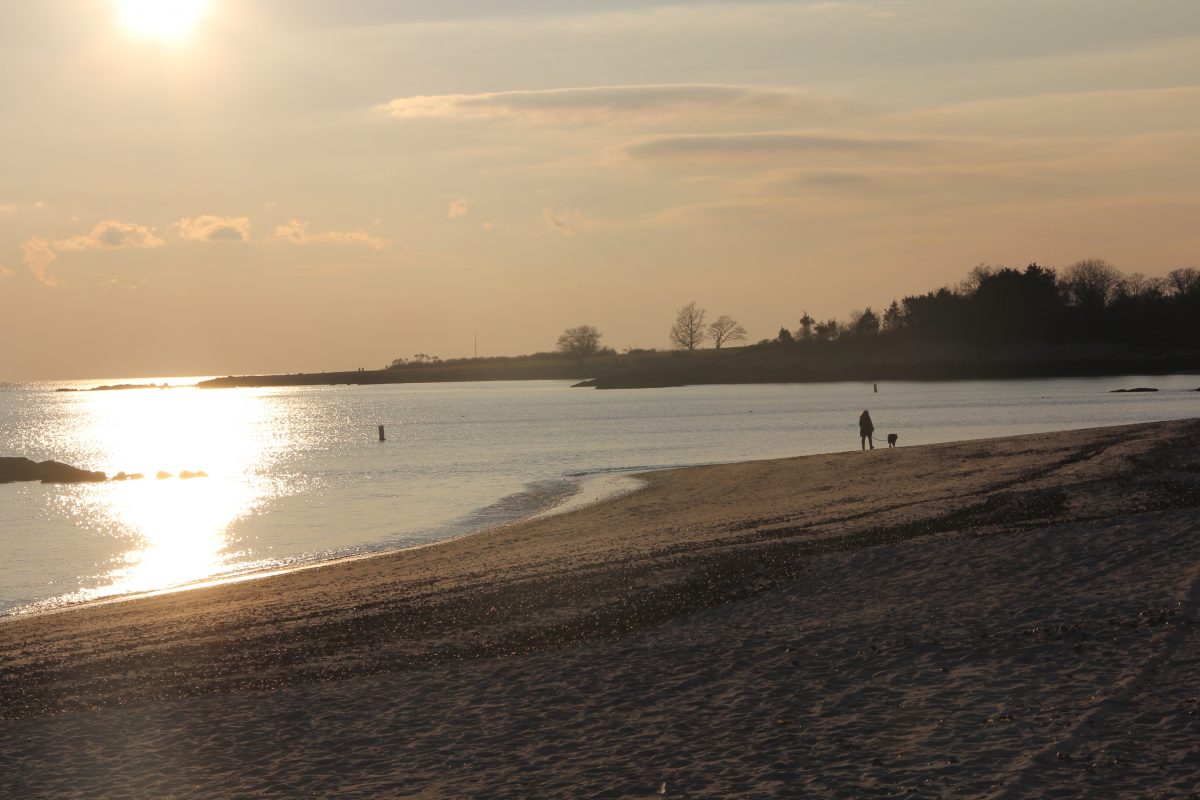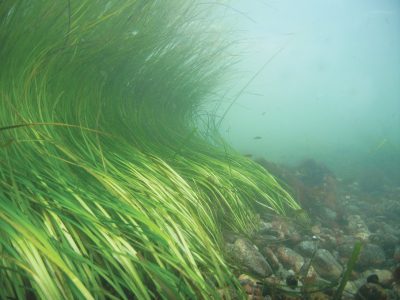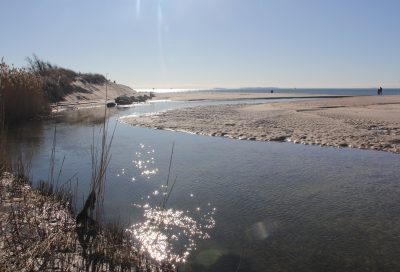
Eight research projects that will examine various facets of the water chemistry and habitat quality of Long Island Sound and potentially yield more effective management decisions have been awarded more than $2.8 million in federal funding through the Long Island Sound Study Research Grant Program.
The projects, supported by a partnership of the Sea Grant programs of Connecticut and New York (CTSG and NYSG, respectively,) and the U.S. Environmental Protection Agency (EPA) through the Long Island Sound Study (LISS), will attempt to answer questions critical to advancing restoration of the estuary and its watershed. All the awards are supplemented with matching funds of at least 50 percent of the grants, extending the value of the research package to more than $4.2 million.
All the projects will span two years, with work slated to begin this spring.
The eight research projects are the latest to be awarded through the Long Island Sound Study Research Grant Program, run by NYSG and CTSG since 2008. Including the new awards, the program has funded ecological research in more than 30 areas. It represents the largest research investment into the Sound, designated an estuary of national significance and one of the most valuable natural resources for both states.
The projects are:
- “Can Watershed Land Use Legacies Inform Nitrogen Management?” (University of Connecticut, Ashley Helton, Chester Arnold, Emily Wilson, David Bjerklie; University of New Hampshire, Wilfred Wollheim; CT DEEP, Mary Becker, Chris Bellucci; Footprints in the Water, Paul Stacey: $487,391). This project will examine the impact of historical land use practices in managing nitrogen.
- “Evaluating Thin Layer Placement in Long Island Sound Marshes Using a Multi-Scale Approach” (University of Connecticut, Beth Lawrence, Ashley Helton, Chris Elphick; CT DEEP, Min Huang: $470,969.) In this project, different types of sediment for effective marsh rebuilding will be assessed.
- “Can They Get Out? Assessing the Effects of Low Streamflow on Juvenile River Herring” (University of Connecticut, Eric Schultz, James Knighton, Cary Chadwick: $231,013.) Researchers in this project will identify barriers to the outmigration of juvenile alewife, a keystone species in the Sound’s food chain.
- “Establishing Robust Bioindicators of Microplastics in Long Island Sound: Implications for Reliable Estimates of Concentration, Distribution and Impacts” (University of Connecticut, J. Evan Ward and Sandra Shumway, $301,150.) One of two projects examining how different types of marine life can contribute to efforts to quantify and remove pollutants, this research will examine the use of slipper snails, tunicates and oysters as bioindicators of the concentrations and impacts of microplastics.
- “Quantifying the Ability of Seaweed Aquaculture in Long Island Sound to Remove Nitrogen, Combat Ocean Acidification, Improve Water Quality and Benefit Bivalves” (Stony Brook University, Christopher Gobler, Michael Doall; GreenWave, Kendall Barbery: $238,933.) In this project, the ability of cultured seaweed and shellfish to remove nitrogen, combat ocean acidification, improve water quality and benefit aquaculture will be measured.
- “Constraining Models of Metabolism and Ventilation of Bottom Water in Long Island Sound Using Oxygen Isotopes” (University of Connecticut, Craig Tobias, James O’Donnell: $694,386.) One of three projects focusing on conditions in water and sediment chemistry, this work will examine factors that influence recovery from hypoxia (low oxygen).
-

An eelgrass bed off of Fishers Island, N.Y. Eelgrass bed restoration will be the focus of one of the eight research projects. Photo: CCE Suffolk County Marine Program. “Improving Eelgrass Restoration Success by Manipulating the Sediment Iron Cycle” (University of Connecticut, Craig Tobias and Jamie Vaudrey; and Cornell Cooperative Extension, Chris Pickerell: $323,404.) This project will evaluate methods to overcome sediment conditions that may impede eelgrass recovery.
- “Alkalinity of Long Island Sound Embayments” (University of Connecticut, Penny Vlahos and Michael Whitney; Save the Sound, Peter Linderoth; CT DEEP, Katie O’Brien-Clayton: $131,088.) This research will evaluate the vulnerability of embayments to changes in acidity that can be harmful to shellfish and other marine life.
In Their Words: Long Island Sound Study Research Projects
“EPA has a longstanding commitment to restoring and protecting Long Island Sound, one of the country’s most important estuaries. This funding will advance ecological research and play a critical role in improving water quality and reducing pollution, providing lasting results for the wildlife and wetlands in the Sound for years to come.” — acting EPA New England Regional Administrator Deb Szaro
“More than 10 percent of Americans live within 50 miles of the Long Island Sound’s shores, where issues like nitrogen pollution threaten water quality, marine life and coastal resiliency. These projects reflect EPA’s longstanding commitment to developing solutions to protect and restore the Sound to healthy waters, benefitting surrounding communities environmentally, economically and recreationally.” — EPA Region 2 acting Regional Administrator Walter Mugan
“This research competition resulted in an interesting diversity of projects. These include novel approaches to understanding and managing Long Island Sound and reaching the goals of increased water quality that support productive ecosystems for the benefit of wildlife and humans. In my opinion, it is a very smart investment for long-term benefits.” — Connecticut Sea Grant Director Sylvain De Guise

“New York Sea Grant is pleased to continue our longstanding partnership with Connecticut Sea Grant and the EPA through the LISS competitive research program. The Long Island Sound is an essential and beloved natural asset to the citizens of NY and CT and supports critical environment and human ecosystem services. The eight diverse and innovative research initiatives that were awarded funding will provide critical knowledge needed to ensure the health of the Sound today and into the future.” — New York Sea Grant Director Rebecca Shuford
“This grant cycle represents the largest amount of funding ever competed and resulted in a very competitive and diverse group of projects. This research effort is even more significant because it is tightly linked to management applications so will go far to improve our understanding of the Sound and help managers in their work to restore and improve the Sound’s waters and biota.” — CTSG Research Coordinator Syma Ebbin
“This cohort of projects continues the successful long-term collaboration between CTSG, NYSG and EPA LISS that continues to expand the knowledge base that is invaluable to aiding the management of Long Island Sound. The results of this research effort will benefit the LIS environment and its communities.” — NYSG Research Coordinator Lane Smith
About the Long Island Sound Study:
Long Island Sound is one of the 28 nationally designated estuaries under the National Estuary Program (NEP), which was established by Congress in 1987 to improve the quality of Long Island Sound and other places where rivers meet the sea.
The Long Island Sound Study is a cooperative effort sponsored by the Environmental Protection Agency and the states of Connecticut and New York to restore and protect the Sound and its ecosystems. The restoration work is guided by a Comprehensive Conservation and Management Plan under four themes: Clean Waters and Healthy Watersheds; Thriving Habitats and Abundant Wildlife; Sustainable and Resilient Communities; and Sound Science and Management.
For more on what you can do to make a difference, visit the Long Island Sound Study’s website by clicking here. News on the Long Island Sound Study can also be found in New York Sea Grant’s related archives.
If you would like to receive Long Island Sound Study’s newsletter, please visit their site’s homepage and sign up for the “e-news/print newsletter” under the “Stay Connected” box.
About Connecticut Sea Grant:
Connecticut Sea Grant (CTSG), located at the UConn Avery Point campus, is a state and federal partnership funded by the National Oceanic and Atmospheric Administration (NOAA) and the University of Connecticut. CTSG, which in 2019 celebrated its 30th anniversary as a Sea Grant College Program, works to achieve thriving coastal and marine ecosystems and communities by supporting local and national research, outreach and education programs. CTSG accomplishes this by providing objective, science-based information to encourage individuals and organizations to make informed decisions, communicating scientific findings in a practical manner helpful to diverse audiences, and helping others balance the use and conservation of coastal ecosystems. Ultimately CTSG’s activities increase the resilience of the coastal communities, economies and ecosystems.
The program has three foci: research, outreach, and education. Outreach efforts include the CTSG Extension Program, and its Communications Program. The program also has an administrative staff committed to promoting understanding of the Sea Grant mission.
For more, visit https://seagrant.uconn.edu
About New York Sea Grant:
New York Sea Grant (NYSG), a cooperative program of Cornell University and the State University of New York, is one of 34 university-based programs under the National Oceanic and Atmospheric Administration’s National Sea Grant College Program.
Since 1971, NYSG has represented a statewide network of integrated research, education and extension services promoting coastal community economic vitality, environmental sustainability and citizen awareness and understanding about the State’s marine and Great Lakes resources.
Through NYSG’s efforts, the combined talents of university scientists and extension specialists help develop and transfer science-based information to many coastal user groups – businesses and industries, federal, state and local government decision-makers and agency managers, educators, the media and the interested public.
The program maintains Great Lakes offices at Cornell University, University at Buffalo, SUNY Oswego and the Wayne County Cooperative Extension office in Newark. In the State’s marine waters, NYSG has offices at Stony Brook University, Brooklyn College and Cornell Cooperative Extension’s NYC and Kingston locations. For more, visit: www.nyseagrant.org.
For more information, contact CT Sea Grant Communications Coordinator Judy Benson.